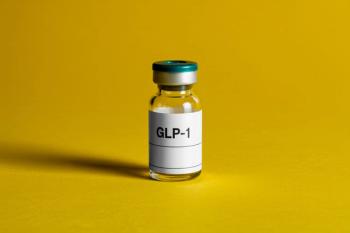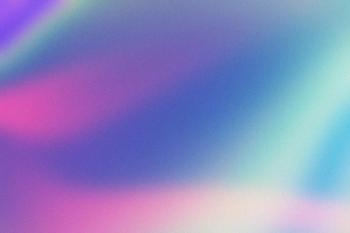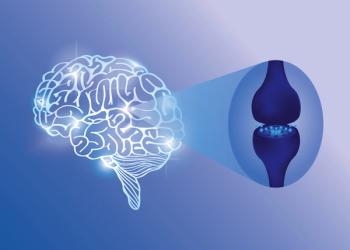
Fresh Perspective on Pandemic Anxiety
What are the differences between disorders like OCD and pandemic anxiety?
Early on, perhaps around April or May, much to my chagrin I failed to look up my bank’s new COVID-19 hours. Thinking the bank opened at 9:30 am, I discovered on arrival that I would have to wait an extra hour to access drive-through banking. I ended up doing my banking the old-fashioned way—in the bank.
Upon returning home, I started to berate myself: “Why did I not wait the extra hour for drive-through? Did my need for efficiency overrule possible exposure to the virus, allowing for the bank’s attentive COVID precautions? Is my social circle also now at risk, and who might they be at this point? If necessary, how do I go about informing them? And at the end of the day, do I really want to bother with all of this?”
What finally assuaged my anxiety was the empathic listening of my support network. One friend told me, “You didn’t commit a crime. You simply went on an errand.” So true and logical, in retrospect. However, at the time, the uncertainty inherent to the pandemic compromised my ability to make a balanced self-appraisal.
Kate Murphy of the New York Times has commented, “our brains are literally overburdened by the pandemic…things we had relegated to the brain’s autopilot function…now require serious thought and risk analysis. As a result, we have less bandwidth available for higher order thinking…”1 Her observations could not be more resonant with my own experience. Every time I step out the door, there is a safety-related checklist that can feel burdensome—remembering a mask, weighing in on the day’s logistics so as to maximize social distancing, and prioritizing what is essential versus non-essential activity. The net effect is a heightened awareness that is not only mentally exhausting but, in certain cases, can lead to an insidious onset of intensified reactivity. Prior to the pandemic, cognitive therapists might have labelled this as a tendency to catastrophize, but now it is an understandable variant of pandemic anxiety.
Pandemic anxiety is driven by the highly contagious and potentially lethal nature of SARS CoV-2. We have read numerous reports of individuals in their prime tragically struck down by the virus, leaving mourners in their wake. Many of us have experienced the trauma of losing someone to COVID-19 first-hand.
Months of social restriction coupled with well-intentioned public health messages have also taken their toll. Of all the holiday warnings circulating this past November, several in particular were striking. Roughly distilled, they read, “Dining with your family member today could result in their ICU admission tomorrow.” Some public health officials found such stark warnings to be excessive, counter-productive to promoting safe travel in their degree of shaming. Acknowledging the beneficial intent—to curb irresponsible behavior—this team of experts nevertheless felt that public health messages needed to be more nuanced to avoid compounding an already heightened level of fear.2
As psychiatrists, we face the challenge of sorting out normal pandemic anxiety from more pervasive anxiety disorders, not only for our own self-understanding, but also to help our patients. And yet, diagnosing anxiety disorders can be tricky if we are simultaneously processing empathy for our patients with verifying our own near COVID-19 misses. Returning to the opening vignette, what distinguishes an acute attack of pandemic anxiety, which can hijack the mind, from an obsessive-compulsive disorder (OCD) obsession? In their international mini review, Sulaimani and Bagadood comment that “the constant warnings about coronavirus and incessant reminders to keep high levels of hygiene have created an obsessive-compulsive nature for doing things...”3
Documentation of anxiety disorders linked with pandemic anxiety include phobias, health anxiety, and obsessive-compulsive disorder, plausibly connected by an underlying theme of intolerance for uncertainty.4,5 Pandemic phobia might, for example, center around an exaggerated fear of a public place, such as a mall, grocery store, or restaurant. Health anxiety, on the other hand, might be focused on the fear of receiving a positive COVID-19 test result, thus triggering fears of illness, hospitalization, incapacity, and potential long-term sequelae.
OCD, by contrast, is more elusive and multi-faceted. Its presentation can overlap with pandemic anxiety: both might lead to harboring intrusive fears of contamination and heightened de-contamination rituals. According to Pascale Moraille, MD, Medical Director of the Outpatient Psychiatry Division at Hoboken University Medical Center, “One difference between pandemic anxiety and OCD is that pandemic anxiety can be adaptive, leading the individual to safe behaviors during these stressful times. In contrast, an anxiety disorder like OCD can be exacerbated, often requiring many different treatment approaches.”
The impact of the pandemic on OCD, with an estimated United States lifetime prevalence of 1.8%, remains an open area of clinical investigation. Pandemic-related treatment barriers to OCD might include defining what is ordinary versus pathological fear; variability in presentation and severity of OCD itself; the recent adaptation of virtual technology for psychiatric care; and the tendency of those with profound OCD to avoid reaching out for professional counseling when confronted with severe stressors.3-5 This tendency to isolate may be a telltale distinguishing feature from pandemic anxiety, where the tendency is to maintain connection (Table).
Respectfully, maybe it is time to hit the pause and reset button for a few theories underlying anxiety treatment. Starting with cognitive behavioral theory, should there not be qualifiers when interpreting the 10 classic cognitive distortions, especially in the context of global crises like COVID-19 or severe weather change?6 Rather than labeling the patient’s thinking patterns as distorted per se, why not counter belief systems with scientifically credible data? Likewise, given the paramount importance of hand hygiene, how wise is exposure and response prevention therapy (ERCP), an OCD behavioral therapy aimed at extinguishing compulsive rituals through in vivo exposure to the feared source of contamination? How many times per day do we all wash our hands to avoid microbial contamination? I confess I have recently lost count.
Dr Sofair practices psychiatry in northern New Jersey. She is affiliated with Morristown Medical Center, Atlantic Health System.
Acknowledgments: Jon W. Green, Esq; Janina Kaldan, MLS, AHIP; Pascale Moraille, MD
References
1. Murphy K. Pandemic-proof your habits. The New York Times. November 29, 2020.
2. Everett R. The COVID-19 outbreak. Shame, fear hurting NJ’s pandemic fight. NJ.com. December 8, 2020.
3. Sulaimani MF, Bagadood NH. Implication of coronavirus pandemic on obsessive-compulsive-disorder symptoms. Rev Environ Health. 2020;31:1-8.
4. Wheaton MG, Messner GR, Marks JB. Intolerance of uncertainty as a factor linking obsessive-compulsive symptoms, health anxiety, and concerns about the spread of the novel coronavirus (COVID-19) in the United States. J Obsessive Compuls Relat Disord. 2021;28:1-6.
5. Aardema F. COVID-19, obsessive-compulsive disorder and invisible life forms that threaten the self. J Obsessive Compuls Relat Disord. 2020 Jul;26:1-5.
6. Burns DD. Feeling Good: The New Mood Therapy. The New American Library, Inc; 1981.
Newsletter
Receive trusted psychiatric news, expert analysis, and clinical insights — subscribe today to support your practice and your patients.














